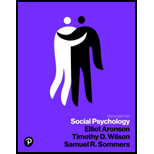
Social Psychology (10th Edition)
10th Edition
ISBN: 9780134700724
Author: ARONSON
Publisher: PEARSON
expand_more
expand_more
format_list_bulleted
Question
Chapter 10, Problem 1TY
Summary Introduction
Introduction
Several factors cause people to become attracted to one another. One is physical proximity, or the propinquity effect. Another is having similar characteristics, including similar looks. Physical attractiveness is also important. Contrary to popular belief, the notion of “opposites attract” really is not true. It may be true initially, but when selecting someone with whom one will spend the rest of his or her life, research shows that we have a tendency to choose people with whom we have the most in common.
Expert Solution & Answer
Want to see the full answer?
Check out a sample textbook solution
Students have asked these similar questions
What ethical dilemmas do the characters Andrew Becket, Joe Miller, and Andrew's law firm face in the film Philadelphia?
Please provide references.
How do the major systems of social stratification—slavery, caste, and class—differ in terms of mobility, opportunity, and control over resources, and how do these systems continue to influence contemporary society, especially in the United States?
Compare and contrast Karl Marx’s and Max Weber’s theories of social class. How do their perspectives help us understand current patterns of inequality related to income, wealth, power, and prestige in the U.S.?
What are the defining features of the contemporary class structure in the United States, and how do sociological models (Weberian and Marxian) help us analyze social mobility and economic disparities across different populations?
What is the difference between income inequality and wealth inequality, and how do these disparities impact life chances, access to resources, and generational mobility for individuals and families?
What structural and demographic factors contribute to poverty in the United States, and how does poverty…
What ethical dilemmas did the characters in the film Philadelphia face?
Please include references.
Chapter 10 Solutions
Social Psychology (10th Edition)
Ch. 10 - Prob. 1RQ1Ch. 10 - Prob. 2RQ1Ch. 10 - Prob. 3RQ1Ch. 10 - Prob. 4RQ1Ch. 10 - Prob. 5RQ1Ch. 10 - Prob. 6RQ1Ch. 10 - Prob. 7RQ1Ch. 10 - Prob. 1RQ2Ch. 10 - Prob. 2RQ2Ch. 10 - Prob. 3RQ2
Ch. 10 - Prob. 1RQ3Ch. 10 - Prob. 2RQ3Ch. 10 - Prob. 3RQ3Ch. 10 - Prob. 4RQ3Ch. 10 - Prob. 5RQ3Ch. 10 - Prob. 1RQ4Ch. 10 - Prob. 2RQ4Ch. 10 - Prob. 3RQ4Ch. 10 - Prob. 4RQ4Ch. 10 - Prob. 1SWCh. 10 - Prob. 1TYCh. 10 - Prob. 2TYCh. 10 - Prob. 3TYCh. 10 - Prob. 4TYCh. 10 - Prob. 5TYCh. 10 - Prob. 6TYCh. 10 - Prob. 7TYCh. 10 - Prob. 8TYCh. 10 - Prob. 9TYCh. 10 - Prob. 10TY
Knowledge Booster
Similar questions
- Read the scenario below and answer some questions on effective supervision and the control of germs using what you learned in the session.Laurie works at a facility-based child care program and is taking courses to become certified as a Level 1 Early Childhood Educator. Last Tuesday was a busy day for Laurie.She was taking care of three toddlers when one of them announced that she had to “go potty”. The other two suddenly decided that they had to do the same. Laurie looked around to let her room partner know that she is taking the three toddlers to the classroom bathroom, but her room partner was engaged playing with other children. “How hard can it be?” thought Laurie as she led the three children to the bathroom.Two of the children had soiled their diapers. Before changing them, Laurie washed her hands. She proceeded to change each child’s diaper. While Laurie was removing the diaper of the second child, the third child said, “I really have to go potty” and wet his pants. Laurie…arrow_forwardChoose an age group and design a play experience that will meet the four holistic play-based goalarrow_forwardPrompt: Modern technology has done little to prevent crime. Write one intro paragraph that includes a thesis statement as the last sentence. (There are three approaches: define key or vague terms, narrow the focus of the topic, and provide relevant background information.) ONLY USE ONE APPROACH. 4-5 descriptive bullet points (with an explanation beside them)(the 5 topics are: science/tech medical care, politics, social relationships, the professional arena, and entertainment) (Bullet points don’t have to be brief as the example provided below) Ex: 1. Science/Tech: Medical Care: US study showed that stereotyping influences who is believed and who isn't in emergency rooms: *White males are believed most often. *Black males are believed less often than white males. *White females are believed less often than males of any color, and Black females are believed least often of any ethnicity/gender.arrow_forward
- How does DNA evidence work, and why is it considered a powerful tool in criminal investigations? Please include references.arrow_forwardPicture yourself five years from now. List some events that might be taking place in society that day.arrow_forwardAdd ten years to today. Write the top news story for that day.arrow_forward
- What are the objectives of the JTTF (Joint Terrorism Task Forces)? References please.arrow_forward- design a lesson plan for a child with a communication disorder who is bilingual. Choose the child’s second language and design a way to bring that language into the lesson plan. How can you help the child see their bilingualism in your teaching? use this as a refernce: https://www.canva.com/design/DAGE-urNdL8/UTP3C4xG4RzyD-pjomxPSQ/editarrow_forwardHumanized answers, couple sentences each: What are some characteristics of children with speech and language disorders, and how can the information processing model (IPM) help us understand their strengths and challenges? Why must a child’s culture and linguistic background be factored in when assessments and services are determined? How do other disability areas impact communication, language, and speech disorders? What educational responses are needed to support children with speech, language, and communication disorders? What family and life course issues are important for individuals with speech, language, and/or communication disorders?arrow_forward
arrow_back_ios
SEE MORE QUESTIONS
arrow_forward_ios
Recommended textbooks for you
 Social Psychology (10th Edition)SociologyISBN:9780134641287Author:Elliot Aronson, Timothy D. Wilson, Robin M. Akert, Samuel R. SommersPublisher:Pearson College Div
Social Psychology (10th Edition)SociologyISBN:9780134641287Author:Elliot Aronson, Timothy D. Wilson, Robin M. Akert, Samuel R. SommersPublisher:Pearson College Div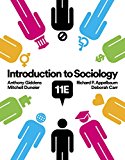 Introduction to Sociology (Eleventh Edition)SociologyISBN:9780393639407Author:Deborah Carr, Anthony Giddens, Mitchell Duneier, Richard P. AppelbaumPublisher:W. W. Norton & Company
Introduction to Sociology (Eleventh Edition)SociologyISBN:9780393639407Author:Deborah Carr, Anthony Giddens, Mitchell Duneier, Richard P. AppelbaumPublisher:W. W. Norton & Company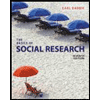 The Basics of Social Research (MindTap Course Lis...SociologyISBN:9781305503076Author:Earl R. BabbiePublisher:Cengage Learning
The Basics of Social Research (MindTap Course Lis...SociologyISBN:9781305503076Author:Earl R. BabbiePublisher:Cengage Learning Criminalistics: An Introduction to Forensic Scien...SociologyISBN:9780134477596Author:Saferstein, RichardPublisher:PEARSON
Criminalistics: An Introduction to Forensic Scien...SociologyISBN:9780134477596Author:Saferstein, RichardPublisher:PEARSON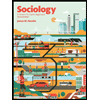 Sociology: A Down-to-Earth Approach (13th Edition)SociologyISBN:9780134205571Author:James M. HenslinPublisher:PEARSON
Sociology: A Down-to-Earth Approach (13th Edition)SociologyISBN:9780134205571Author:James M. HenslinPublisher:PEARSON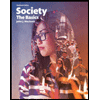 Society: The Basics (14th Edition)SociologyISBN:9780134206325Author:John J. MacionisPublisher:PEARSON
Society: The Basics (14th Edition)SociologyISBN:9780134206325Author:John J. MacionisPublisher:PEARSON

Social Psychology (10th Edition)
Sociology
ISBN:9780134641287
Author:Elliot Aronson, Timothy D. Wilson, Robin M. Akert, Samuel R. Sommers
Publisher:Pearson College Div

Introduction to Sociology (Eleventh Edition)
Sociology
ISBN:9780393639407
Author:Deborah Carr, Anthony Giddens, Mitchell Duneier, Richard P. Appelbaum
Publisher:W. W. Norton & Company

The Basics of Social Research (MindTap Course Lis...
Sociology
ISBN:9781305503076
Author:Earl R. Babbie
Publisher:Cengage Learning

Criminalistics: An Introduction to Forensic Scien...
Sociology
ISBN:9780134477596
Author:Saferstein, Richard
Publisher:PEARSON

Sociology: A Down-to-Earth Approach (13th Edition)
Sociology
ISBN:9780134205571
Author:James M. Henslin
Publisher:PEARSON

Society: The Basics (14th Edition)
Sociology
ISBN:9780134206325
Author:John J. Macionis
Publisher:PEARSON